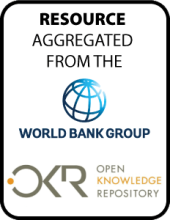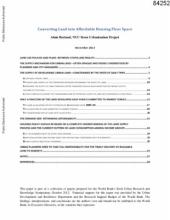Land Library
Welcome to the Land Portal Library. Explore our vast collection of open-access resources (over 74,000) including reports, journal articles, research papers, peer-reviewed publications, legal documents, videos and much more.
/ library resources
Showing items 1 through 9 of 334.Ulaanbaatar's (UB) population has swollen from half a million in 2001 to approximately 1.2 million in 2011, accounting for over 40 percent of the country's population. This trend is likely to continue as economic growth is increasingly concentrated in UB.
Scientific evidence indicates that global warming could well lead to a sea-level rise of 1 meter or more in the 21st century.
This housing policy in developing
countries, conjectures and refutations article discusses
housing policy in developing economies. It examines recent
research findings in light of earlier arguments as to the
Measurement of the likely magnitude of
the economic impact of climate change on African agriculture
has been a challenge. Using data from a survey of more than
9,000 farmers across 11 African countries, a cross-sectional
Spatial disparity in incomes and
productivity is apparent across and within countries. Most
studies of the determinants of such differences focus on
cross-country comparisons or location choice among firms.
This article focuses mainly on the five
primary case study countries. For forest impacts, the
concentration is on forest conversion to other land uses and
deforestation, defined as a (temporary or permanent) removal
The rapid urbanization in many
developing countries over the past half century seems to
have been accompanied by excessively high levels of
concentration of the urban population in very large cities.
This paper analyzes real estate market dynamics over the past decade in the city of Ahmedabad, India, with a view to improving the living conditions of the large population living in slums.
Cities emerge from the spatial concentration of people and economic activities. But spatial concentration is not enough; the economic viability of cities depends on people, ideas, and goods to move rapidly across the urban area.




